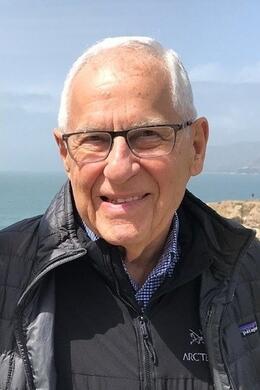SPUR’s first deputy director, Joseph Bodovitz, died on March 9, 2024, at age 93, following a very influential career in public service and environmental protection. A remembrance by the Bay Conservation and Development Commission (BCDC) observed, “Nobody in the entire State of California was more influential in developing California’s coastal zone management policies than Joe Bodovitz.” And it all started at SPUR.
While SPUR was founded in 1910 as the San Francisco Housing Association, it was staffed by volunteers until 1959 when John Hirten was appointed first executive director and the organization was renamed SPUR. Then in 1964, Joe was hired as the first deputy director. With a master’s in journalism, Joe had been a newspaper reporter for the Examiner at a time when there were four dailies in San Francisco. His beat included planning, transportation, development, and government. As a reporter, he knew how to get to the heart of an issue and make complicated subjects understandable to the public — characteristics that would serve him well in his new career as a planner.
At that time, three Berkeley women, Catherine Kerr, Esther Gulick, and Sylvia McLaughlin, were working behind the scenes to save the bay tidelands. They had formed Save the Bay in 1961 but had not succeeded in getting legislation to stop plans to fill the bay. Enter SPUR founder Dorothy Erskine, John Hirten, and Joe Bodovitz, who together with Save the Bay convinced State Senator Eugene McAteer to abandon a proposed automobile bridge from Telegraph Hill to Angel Island to Marin County and instead to study bay fill issues. The legislature set up a commission to investigate, and SPUR lent Joe Bodoviz to staff the commission. The result was the 1965 McAteer-Petris Act that formed BCDC. Not surprisingly, Joe was named its first executive director, culminating in the publication of the first San Francisco Bay Plan in 1969. Not only does BCDC strictly limit bay fill, but it requires public access along the shoreline. Today we take it for granted that we can touch the Bay at an ever-increasing number of locations, but in the ’60s there was virtually no shoreline access. The Bay was just a place to dump garbage and fill for development. Joe Bodovitz’s work was key in saving the Bay.
After this success, in 1972 Joe was tapped to be first executive director of the newly legislated California Coastal Commission, which championed public access to the state’s beaches and became a national model. In 1979 he was named executive director of the California Public Utilities Commission in the era of industry deregulation that saw the break-up of the Bell telephone system. This was followed by a stint as first president of the California Environmental Trust, an environmental nonprofit established to, among other things, administer funds from environmental lawsuits.
When BCDC was formed in 1965, Joe and SPUR had hoped that it would be just the first step in greater Bay Area regional planning. That did not immediately happen. Then starting in 1989, Joe staffed Bay Vision 2020, a voluntary 32-member blue ribbon commission (including SPUR’s Anne Halsted) recommending regional strategies for the Bay Area, including merger of the various regional agencies. Their final report went to the California legislature in 1992, where it was passed by the assembly and defeated in the senate by four votes, a product of public inertia and a complex web of private and public special interests.
It took until 2017 for the Association of Bay Area Governments (ABAG) and the Metropolitan Transportation Commission (MTC) to consolidate and adopt Plan Bay Area 2040. The consolidated ABAG and MTC are now co-located in the Bay Area Metro Center, along with BCDC and the Bay Area Air Quality Management District, over 50 years after Joe’s first proposal.
As SPUR focuses again on regionalism, with the publication of the SPUR Regional Strategy in 2021, it builds on the work of Joe Bodovitz and other civic, planning, and environmental leaders. Joe’s career and life exemplified SPUR: do quality research, educate the public, advocate for change with our elected leaders — and never give up. While we will all miss Joe, his legacy of environmentalism and regional planning endures throughout California.
